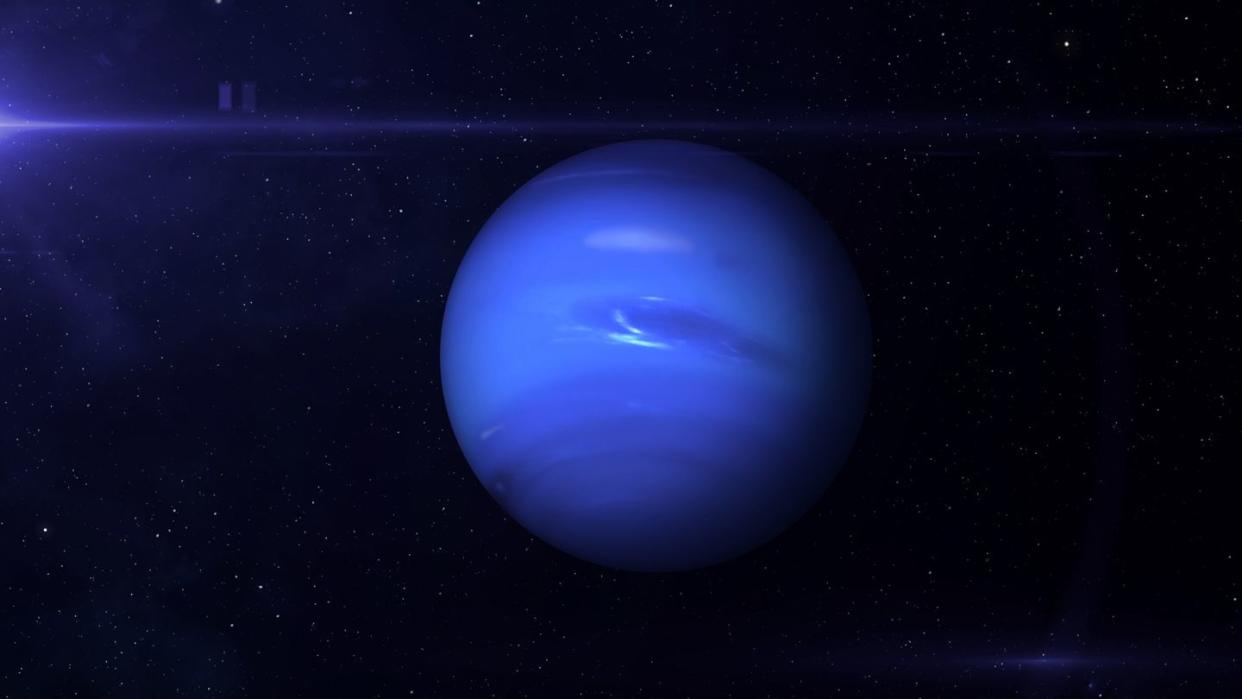Scientists Thought They Knew What Uranus and Neptune Were Made Of. They Were Fooled.

Because Uranus and Neptune are so far away, scientists only have educated guesses about the combination of ices and gases that make up these ice giants.
While the general understanding is that these planets both have large amounts of water ice, a new study posits that a significant portion of that ice is likely actually methane.
It’s probable that organic-rich material found in planetesimals interacted with the planets’ hydrogen/helium atmosphere and high temps and pressures of the early planet development to develop a layer of methane ice that could account for as much as 10 percent of these planets’ masses.
The ice giants Uranus and Neptune live up to their name. Although humans have only ever sent one spacecraft (Voyager 2) toward these far-flung worlds, scientists have a pretty good idea that these planets contain ice—and lots of it. Some estimates place these planets’ water content at around 50,000 times what’s found in Earth’s oceans.
However, the exact composition of that water is up for debate. Neptune, for example, has an atmosphere made of hydrogen and helium (with just a tinge of methane), and it doesn’t really have a surface—or, at least, not what we think of as a surface. NASA describes the “surface” of Neptune as “extend[ing] to great depths, gradually merging into water and other melted ices over a heavier, solid core with about the same mass as Earth.”
But scientists at the Technion–Israel Institute of Technology state in a new, not-yet-peer reviewed study that the planet could contain much more methane ice than previously believed. The results were published on the pre-print server arXiv in March.
To understand this overlooked composition means going back to Uranus and Neptune’s formation billions of years ago. To contain so much water, the planets must “accrete,” or gather under its immense gravity, ice-rich planetesimals during its formation. However, when analyzing planetesimals in the Kuiper belt—of which the notoriously demoted Pluto is a member—they’re mostly made of refractory materials, meaning they’re “ice poor.”
So, where exactly did all this ice come from?
“Uranus and Neptune are commonly considered ice giants, and it is often assumed that, in addition to a solar mix of hydrogen and helium, they contain roughly twice as much water as rock,” the study reads. “We show that chemical reactions between planetesimals dominated by organic-rich refractory materials and the hydrogen in gaseous atmospheres of protoplanets can form large amounts of methane ‘ice’. Uranus and Neptune could thus be compatible with having accreted refractory-dominated planetesimals, while still remaining icy.”
To figure out this mystery, scientists developed thousands of random statistical computer models of Uranus and Neptune’s interior, created a surface composition, and worked inward. When tested with several different chemicals and various water/rock compositions, the closest recreation of Uranus and Neptune’s radius and mass required vast amounts of methane ice formed through interactions with organic-rich (ice-poor) planetesimals and the planet’s hydrogen atmosphere. This formation was also helped by the high temperature, high pressure environment that occurs during the chaotic development of planets.
The paper states that this methane ice would likely be in a chunky, mushy layer between the hydrogen/helium atmosphere and the lower layer of water. According to Live Science, some models even showed that methane could make up as much as 10 percent of these planets’ masses.
“While the oxygen in rocky minerals and small amounts of CO ice will react with the hydrogen to form additional water, the carbon inside refractory organics will form very significant amounts of methane,” the paper reads. “Our random model generator shows that such methane-rich planets can fit the observed properties of Uranus and Neptune.”
Resolving many of these compositional mysteries requires sending a spacecraft to Uranus—the exploratory path for which was laid out by Voyager 2 in the 1980s. Luckily, NASA has recognized a mission to Uranus as of the “highest priority” as part of its Planetary Science and Astrobiology Decadal Survey. Hopefully, when that mission finally arrives, we’ll learn for sure what really makes up these fascinating icy worlds.
You Might Also Like

